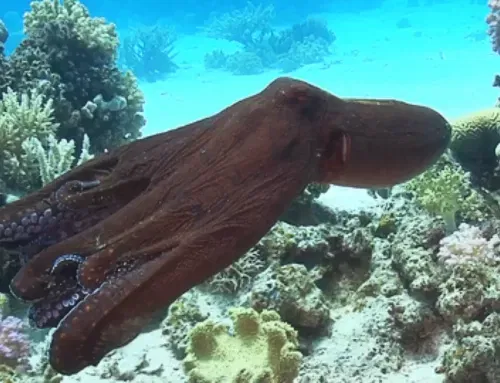The other day a friend of mine said that Daniel Dennet, a philosopher, considered language the primary difference between humans and animals. Although I had not read anything by Dennet, I strongly objected to this simplified view. My problem was that lots of animals have their own language: birds sing, whales make diverse sounds, bees dance, elephants pound the ground with their heavy feet, chimpanzees squeal and sign, and so forth. While scientists have deciphered some elements of these cryptic animal languages – and they are languages – non-human species speak in foreign tongues to us, so how can we compare it with human language? We don’t even know all the behavioral traits different animals use to communicate with each other or how they process the information. We don’t speak “bird” or “whale” or “bee” or “elephant” or “chimp” or any other animal language.
I asked a psychiatrist and psychoanalyst friend if he thought language was the principal distinction between humans and animals. “It makes sense,” he said. “Human language is so complex and nuanced, and it allows humans to provide a wedge between what they want and what they actually do. What animal can do that?”
I couldn’t refute his knowledge of the subtle complexities of language and the human mind. Nonetheless, I asked how he would interpret a panther (or other big cat) circling a prey it wanted to kill and eat, but sensing some danger from another source, changed its mind and ran away. I suggested that what the animal sensed might be a “language” that acted as a wedge between what it wanted (to kill the prey) and what it did (run away). Of course, this example was imagined by me on the spur of the moment, and I have no idea if such behavior would occur. Nevertheless, my friend nodded and said, “Hmm, yes, that’s an interesting question,” leaving the door open in my mind as to the qualitative difference between human and non-human species.
As I pondered the difference between humans and animals, I recalled becoming angry when a scientist colleague tried to create borders between human races, an even narrower distinction than between humans and animals. He argued that genetic differences between human races are manifested in behavioral differences, such as in sports prowess and even intelligence. Oh my god, no! What an outdated, racist notion, floundering in ignorance of how genetics might affect behavior. In any case, a recent New York Times article by David Reich reviews how there are greater genetic differences within human races than between them. Despite various degrees of differences in DNA between different species, I don’t believe we are ready for genetics to create meaningful, general borderlines between humans and animals.
It is interesting to consider “personhood” to distinguish between humans and other species, which has been discussed recently by Jeff Sebo in a New York Times article. The question raised is whether chimpanzees are “persons.” Legally in the United States one is either a person or a thing. Period. There is no other option. People are considered both humans and persons; everything else, including chimps and other animals, are things and have no legal rights. Fine. However, people share human traits with chimps, such as emotions, conscious experience, interdependence, and other characteristics. Thus, the Nonhuman Rights Project, presently in progress, argues that two chimps, Tommy and Kiko, that are held in cages and isolated from other chimps have the right to habeas corpus relief, which protects from unlawful confinement. They should be freed from their cages and allowed to live with other chimps. Without going into further detail here, it seems clear that the distinction between humans and other species includes crucial moral questions, which implicates legal issues, obviating a single or absolute answer.
My son Anton cleverly linked personhood to law and morality in Al-Tounsi, a novel based on a true case of habeas corpus. Sarah, a Supreme Court Justice in the novel, defined personhood according to the Ten Commandments. In brief, Sarah states that a person is unitary, not to be confused with a material thing (which an animal is not), lives inside language, respects rules and is regulated by law, exists within structured time, honors family and has interpersonal context.
The columnist David Brooks discusses what he calls “personalization” in social fragmentation that begs the question of distinguishing between humans and other species altogether by drawing an arbitrary line between humans and animals. Interestingly, he berates “our continual, futile effort to create borders between people,” and writes, “…there is a complexity and superabundance to each human personality that gives each person unique, infinite dignity.” Brooks concludes that “…social fragmentation…sprang from world views that amputated people from their own depths and divided them into simplistic, flattened identities.”
I don’t agree with Brooks’ arbitrary separation between humans and animals, but I do believe that our fixation on the differences between humans and animals or between races and social groups unfortunately detracts our attention from their more important and interesting connections.
Why do we focus so much on borders to create hierarchies and arbitrary separations? What comes to mind is a saying that was posted on the wall of Anton’s second grade classroom: “Everything is something. Everything is related to everything else. There’s no such thing as a free lunch.”
How Genetics is Changing our Understanding of Race New York Times, March 23, 2018
Should Chimpanzees Be Considered Persons? New York Times, April 7, 2018
Personalism: The Philosophy they Need New York Times, June 14, 2018






Leave A Comment